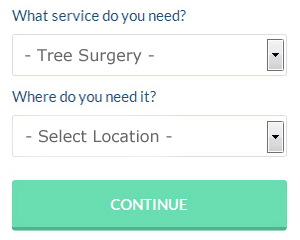London Tree Surgeons (SW1): Offering pleasant shade on hot sunny days, providing shelter and home for our ever decreasing wildlife and producing essential oxygen for our planet, trees are incredible things to have and enjoy in our gardens. However, to balance the good points about trees, there are also drawbacks. Trees can get diseased and unhealthy. Trees can become too big for our gardens in London. Trees can get damaged by wind and gales. When concerns are growing about your trees in London, a tree surgeon is the best person to contact.
Who you gonna call? Tree surgeons! - Tree surgeons play an essential role in the maintenance and general care of trees for a multitude of customers in London - both commercial and domestic. Tree related services such as: tree felling, hazard assessments and inspections, the safe planting of trees, the pruning of weakened, dead or intruding branches, as well as general tree maintenance, are only a few examples of what a trained London tree surgeon can provide.
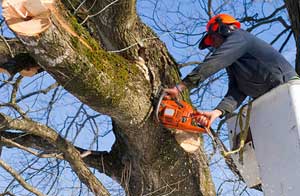
However, it isn't simply trees that float a tree surgeon's boat! Such tasks as hedge pruning, maintenance and care and stump removal, are among the additional responsibilities of a tree surgeon in London. Because they'll be able to examine your tree, put together a report on likely hazards, and give advice on what to do next, a tree surgeon is the individual to phone if you've got any reservations about a tree's structural integrity.
Because it is such a hazardous business, tree surgery is definitely something that should only be tackled by a professionally trained operative. Although you might be tempted to avoid the costs and take the do-it-yourself approach, it would definitely not be the wisest decision to make. So as to undertake this sort of task, tree surgeons need to be experienced, qualified and physically fit.
Working at height is invariably risky, and using dangerous power tools while high up in the air and dangling from a tree is obviously no exception. So, you can see why it isn't a task for beginners! Tree surgery work is also commonly conducted by a gang of experienced tree surgeons, including climbers and a ground crew, who are all experts in the field. Rivalling this level of competence, experience and risk assessment to execute the work, would be virtually impossible for any untrained individual.
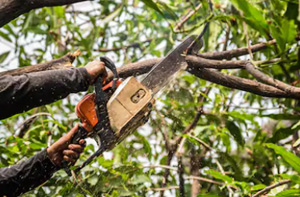
Upon deciding that you need the expert help of a tree surgeon in London, the initial step is to identify a really good one that can be trusted. But, what is the best way to accomplish this? Well, you'll want to check out a few things, such as qualifications, experience and cost. Below, we will be considering just some of the things you should look for when selecting a tree surgeon in London.
Firstly, you will want to ensure that they've got the right certifications to reassure you they're correctly trained and competent. The main governing body for tree surgeons and the organisation issuing certifications is the the National Proficiency Tests Council. Any competent London tree surgeon should have the following certificates as a minimum requirement:
- NPTC 206/306 (CS38) - Climb a tree and carry out aerial rescue.
- NPTC 308 (CS39) - Chainsaw use from rope & harness.
- NPTC 203 (CS31) - Fell and process small trees up to 380mm (15 inches) in diameter.
- NPTC 201/202 (CS30) - Chainsaw crosscut & maintenance.
Because holding these certifications shows that they've completed the proper training, it is worthwhile tracking down a tree surgeon in London that has them, although this is not currently a legal obligation. Earning these qualifications should give you the peace of mind that the job will be completed in a safe and successful manner. It is also vital that some basic First Aid qualifications are held by arborists, tree surgeons and forestry workers, and that they carry a comprehensive First Aid kit in accordance with HSE workplace guidelines.
Getting several quotations will be the next step, along with checking the breakdown of costs. It is best to get two or three quotes from different tree surgeons in the London area. Disposal costs for the considerable amount of waste often generated by tree maintenance and surgery, will in some cases not be included in the quote. Removing such waste can be costly and inconvenient for the customer therefore it is definitely preferable to get the tree surgeons to remove and dispose of this waste themselves if possible.
Also, be prepared to ask prospective tree surgeons plenty of important questions when you meet up with them. For example, you'll want to know exactly who is going to be working on-site. Will it be one individual or a whole crew of people? Will you be able to meet up with them beforehand? What is the timescale for the work? What tree surgery or removal methods will be used on the tree? Will my home or my next door neighbours be impacted?
You shouldn't be frightened to ask all these questions, as the more you ask, the less likely it is that there'll be any unpleasant surprises further down the line.
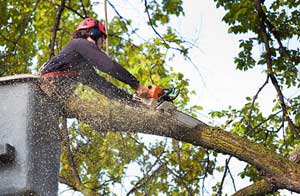
Finally, listen closely to how your tree surgeon speaks. Listening to how they describe the work they are planning to do should give you an inkling of their standards of knowledge and experience. If your 'tree surgeon' throws in the phrase 'lopping and topping', this might well be somebody to stay clear of, as this kind of terminology is more associated with rogue traders and cowboys, who know little or nothing about modern methods of tree surgery. The right terminology will be used by a professional, experienced and skilled tree surgeon in London, who will reel off phrases like 'crown reduction', 'thinning', 'pruning', 'dead wooding' and 'crown lifting'. While this can be a valuable clue concerning the level of experience held by your tree surgeon, it isn't automatically proof of ability.
In the final analysis, with regards to tree surgery or tree care, it is always worth consulting a variety of different tree surgeons in London. This will help you to find the best person for the task, and one who'll make certain all your requirements are fully catered to in a pre-agreed timeframe, and with safe practice as a top priority.
Local London tree surgery services will likely have the postcode SW1 and the telephone code 020. They will work in London itself, together with nearby areas such as Islington, Barnet, Haringey, Bromley, Waltham Forest, Kingston upon Thames, Camden, Brent, Havering, Greenwich, Bexley, Southwark, Hounslow, Hackney, Croydon, and these postcodes: NW1 4QD, NW1 5EB, NW1 5EN, NW1 4QU, EC4A 2AH, NW1 5HH, NW1 5GD, NW1 4RX, NW1 4RL, NW1 5HF. Checking this will ensure that you're accessing a local tree surgeon. London homeowners can benefit from these and numerous other comparable services.
If you require this sort of assistance it's unquestionably wise to bring in a reputable tree surgeon. London business and home owners can benefit greatly from the expertise and knowledge offered by a fully trained professional.
Woodland Clearance London
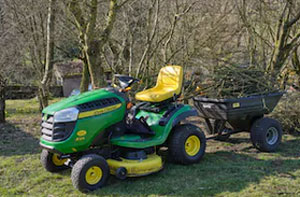
Woodland clearance in the London area is a delicate process that can be affected by various restrictions and regulations. Calling on the services of an experienced London tree surgeon for your woodland clearance project, will see them applying for any relevant permits, following applicable covenants and protection orders, and use eco-friendly techniques for completing the clearance.
An in depth site survey will be carried out by the tree surgeon who'll also collaborate with woodland organisations and authorities to ensure that your clearance is done safely and legally. If it's found that protected plant or animal life is on the site that needs clearing, it may be possible to transfer such flora and fauna, if approval is given by the relevant authorities.
It is going to be much more cost effective to call on a specialist London tree surgeon to undertake your clearance project, since the mulching, chipping and felling equipment that is required is extremely costly. (Tags: Woodland Clearance London, Woodland Management London, Woodland Clearances London, Woodland Preservation London).
Tree Transplanting London
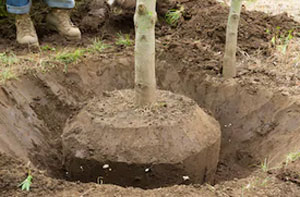
Moving fully-grown trees is an intricate, but rather straightforward process these days, mainly due to cutting-edge truck mounted spades, tree lifting devices and other specialised machinery. Fully developed trees can be replanted on new properties to accomplish an instant landscaping look, or out-of-control wooded areas can be thinned out without the need to turn to tree felling.
Transplanting a tree in London is less stressful on the root-ball and wellbeing of the tree in the winter and autumn, but it can be achieved during the warmer summer season by soaking the ground thoroughly before lifting. Removing a mature tree involves a mechanical spade digging down and encompassing the main root-ball, before raising the whole tree, undamaged, from the ground. The tree can then be temporarily stored before its transplanting in its new home.
Even protected trees can be moved and transplanted by a specialist tree moving contractor in London, providing that all appropriate legislation and preservation orders are granted by the authorities and woodland organisations. It should be possible to find tree transplanting specialists in Islington, Barnet, Haringey, Bromley, Waltham Forest, Kingston upon Thames, Camden, Brent, Havering, Greenwich, Bexley, Southwark, Hounslow, Hackney, Croydon, and in London. (Tags: Tree Transplanting London, Tree Moving London, Tree Replanting London).
Skills and Knowledge Required by Tree Surgeons in London
- Be able to work with your hands.
- Have necessary computer skills and know how to complete basic tasks with handheld devices.
- Be professional and capable of completing work within the specified time frame.
- Be aware of the complexities and dangers involved with the various areas of tree work.
- Have patience and the ability to stay calm and focused in stressful circumstances.
- Good knowledge of public safety and security.
- Have the ability to maintain, use and repair machines and tools.
- Physical skills such as coordination and movement.
- The capacity to work well with other folks.
- Excellent customer skills.
- Have a methodical and organised approach to work.
Protecting Shrubs & Trees in the Wintertime
Although long periods of extreme cold are quite rare in London it could still be worthwhile to consider some precautionary measures for protecting your shrubs and trees when the weather conditions turn bad. In actual fact, even shrubs, plants and trees that we normally think of as being hardy, can benefit from a bit of extra protection in the colder winter months.
Obviously where trees are concerned it is high winds that can be the biggest problem and although most trees will already have shed their leaves, they might still suffer damage in windy conditions. If you are worried about the condition of a tree, or it seems like it could topple over, you should call in a tree surgeon to examine it and conduct a risk assessment. Heavy snowfall can also cause branches to snap, so keep an eye out when this sort of weather arrives. In the height of winter, your shrubs and trees may require a little protection from frost and ice. Laying a thick covering of mulch around the stem bases will enable them to absorb moisture and stop the surrounding soil from freezing.
Stump Grinding
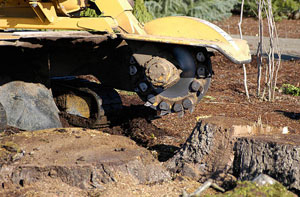
It is important to it is sensible to bring in a tree surgeon having the proper tools and knowhow, when you need to get stump grinding done in London. The very best London tree surgeons will understand that every remnant of the stump has to be removed down to a depth of at least 12 inches. Grinding down stumps and roots to right up against structures and walls without without damaging them, can only be accomplished if your tree surgeon has got the use of the correct machinery. This purpose built grinding equipment is so versatile that it can even be used to clear away tree stumps that are tucked away in alleys, passageways and similarly inaccessible locations. Where really big trees have to be removed the tree stump that remains can be rather substantial and the major roots are going to go down to a considerable depth, requiring a herculean effort to remove them.
Ash Dieback (Hymenoscyphus Fraxineus)
Most likely to wipe out about 80% of the current UK ash tree stock, over the next few years, ash dieback is a fungal disease of ash trees that was first reported in the United Kingdom in 2012. Set to have an enormous impact on our beloved countryside, ash dieback is probably going to be just as catastrophic as the earlier epidemic of Dutch Elm Disease.
Ash dieback has a particularly devastating effect on the native British common ash (Fraxinus excelsior), although it affects all trees of the Fraxinus genus, which have different levels of tolerance to it. The fungus which causes the disease is named Hymenoscyphus fraxineus (H. fraxineus), and it originally came from eastern Asia.
Now present in most areas of the British Isles, ash dieback (or chalara ash dieback as it is often known) is dispersed by wind blown spores which are produced by the fruiting bodies of the fungus, and can travel for many miles.
Ash dieback can be recognised by symptoms such as:
- Dying shoots and leaves which are visible during the summertime.
- Foliage that wilts, turns black in colour and falls prematurely.
- New epicormic growth appearing from buds that were dormant previously.
- Leaves with dark patches that appear during the summertime.
- Dark brown lesions (often diamond shaped) form where limbs join the trunk.
To a certain degree, ash trees can fight off the infection, however they ultimately succumb as they're repeatedly attacked year-on-year. There's currently no cure for ash dieback, and no apparent strategy for stopping its spread.
If you suspect a tree in your local area is infected with ash dieback, or you are worried about a tree in your garden in London, you should bring in a local tree surgeon to verify the diagnosis, and you can report it to the Forestry Commission's "Tree Alert Service", although they are now only interested to know about cases in areas that were previously unaffected.
Trees of the genus Fraxinus are affected.
(Tags: Identifying Ash Dieback, Ash Dieback London, Symptoms of Ash Dieback).Dutch Elm Disease
Destroying tree stocks and killing off many millions of elm trees all around the British Isles over the last 50 years or more, Dutch Elm Disease (Ophiostoma novo-ulmi) isn't so widespread now, as it was in the past. Inadvertently imported into the UK, in infected elm logs imported from Canada in the late 1960's, DED (Dutch Elm Disease) is caused by the fungus Ophiostoma novo-ulmi which is spread by the elm bark beetle (particularly the Scolytus genus).
After arriving in Britain, it spread swiftly through the nationwide movement of elm products such as saplings, elm crates, bark mulch, and firewood logs with the bark still attached. Thought to have originated from Asia (most likely Japan), Dutch Elm Disease did not only affect trees in the UK, but also destroyed the stocks of elm trees in continental Europe, North America and New Zealand.
Usually first materializing in early summer, the main symptoms of Dutch Elm Disease disease are:
- Clusters of yellow leaves that wilt and then fall.
- Dark streaks under the bark of twigs.
- New shoots that die back from the tips.
- Twigs turning into a "shepherd's crook".
The spread of Dutch Elm Disease has been significantly slowed by the removal of dead, dying and infected trees, which has effectively eradicated the elm bark beetle's favourite habitat. A project for the propagation of young elms that up to now have proven resistant to DED is currently being undertaken.
You could ask for a diagnosis from the THDAS (Tree Health Diagnostic & Advisory Service), or you can speak to your neighbourhood tree surgeon for advice, if you happen to have elm trees in your garden in London, and have suspicions they may be afflicted with DED.
Tree families affected: Ulmacae and Zelkova.
Spread by - beetles of the Scolytus and Hylorgopinus genera.
Cause - fungi Ophiostoma Novo-Ulmi & Ophiostoma Ulmi.
The International Society of Arboriculture (ISA)
Having its headquarters in Atlanta, United States, the International Society of Arboriculture, generally referred to as the ISA is a non-profit organisation that fosters the awareness and benefits of trees. Providing credentials for tree care professionals throughout the world, the ISA is a membership association that promotes the professional practice of arboriculture.
Enabling those who work in the tree care sector to improve their skills, arboricultural expertise and knowledge, the ISA is focused on education, technology and research, which it makes available by way of educational publications, events and services.
During mid-2016 the UK's Arboricultural Association (AA) was accepted as an associate organisation of the ISA after signing a partnership agreement with them. This allowed the two to significantly strengthen their relationship, while providing further opportunities for any tree surgeon in Great Britain and Ireland who's a registered member of the ISA. UK Arboricultural Association members now benefit from being an integral part of a wide and varied international tree care network. The International Society of Arboriculture now boasts over 22000 members worldwide with associate organisations and professional affiliates in EXTRAcrown raising, eco-plugging, tree transplanting London, tree reduction, damage restoration, arboriculture in London, tree bracing, health assessments London, tree waste removal, tree lopping, stump treatment, tree removal, root grinding, decompaction, tree staking, tree felling, fruit tree pruning in London, commercial tree care, retrenchment pruning, tree planting in London, repair of storm damaged trees in London, landscape clearance London, crown reduction London, crown thinning, coppicing London, soil terraventing, tree care services in London, drop crotching in London, tree planning, crown cleaning in London, hedge reduction London, site clearance in London, formative pruning, tree watering in London, pollarding LondonTEN, and the United Kingdom.
Tree Preservation Orders (TPOs) London
Before you do any serious work on your trees in London, you need to make sure none of them have TPOs (Tree Preservation Orders) If you contact your local authority, they will advise you whether any of your trees are subject to a Tree Preservation Order. You cannot carry out uprooting, removal, lopping, wilful destruction, felling, topping or wilful damage, without written permission from the local authority, if a tree on your property in London is subject to a TPO. Your tree surgeon will be able to give you advice on this and help you out with any checks.
If you are living in a conservation area in London, and plan to conduct any work on a tree with a diameter of 75mm or more (1.5 metres from the ground), you have to give a minimum of six weeks notice in writing to your local planning authority. (Tags: Tree Preservation Orders (TPOs) London, Tree Preservation Order London, Tree Preservation Orders London).
Coming Soon: Tree pruning London.
Tree Surgery Tasks London

London tree surgeons can generally help with crown raising, eco-plugging, tree transplanting London, tree reduction, damage restoration, arboriculture in London, tree bracing, health assessments London, tree waste removal, tree lopping, stump treatment, tree removal, root grinding, decompaction, tree staking, tree felling, fruit tree pruning in London, commercial tree care, retrenchment pruning, tree planting in London, repair of storm damaged trees in London, landscape clearance London, crown reduction London, crown thinning, coppicing London, soil terraventing, tree care services in London, drop crotching in London, tree planning, crown cleaning in London, hedge reduction London, site clearance in London, formative pruning, tree watering in London, pollarding London and other tree surgeon services in London, Greater London. Listed are just a handful of the tasks that are performed by a local tree surgeon. London providers will inform you of their entire range of services.
Leave a Review
Reviews and feedback are the lifeblood of any London business, and a good online review or testimonial can be the difference between a prospective client appointing a company, or moving on to somewhere else. If someone has done a decent job for you, it is only good and proper that you should leave them a nice review, and tell others about how they did. Your personal experience of the business will be beneficial not merely to the company, but also to any potential customer. You might think back to how positive or negative reviews helped you to decide when you were first looking for someone to do your work. In the absence of those reviews, you might have looked elsewhere, even if a particular company website looked extremely professional and convincing.

However, when you are on a company's own website, how can the reviews you see be relied on? Did actual clients who were happy to recommend the service come up with these reviews, or were they penned by an over-enthusiastic employee looking to gain extra business?
A simple way to find genuine and sincere reviews is to look at the Google My Business reviews. This is the review website that is trusted by millions to establish company reputations, and can affect their ranking in the search engines too. When looking to leave reviews for local services and businesses in London, the second biggest review website is Bing Places for Business, which is Google My Business's leading competitor. You can help to raise the profile of a company that worked successfully on your tree surgery project by writing and submitting a positive review here, and at the same time build a rundown of the working standards and trustworthiness that they provided. Leaving reviews on Twitter and Facebook is every bit as effective for endorsing a company that has done a good job. Regularly used in the advertising of most small companies in London, such social media platforms are extremely influential. Their message will be strengthened by your favourable reviews and give a starting point to family and friends who are looking for services of a similar nature.
If you aren't comfortable with computers you can always just send in a hand-written thankyou letter to the company involved. These are still handy in an online world and can be scanned in for use on websites, or possibly even framed or gathered together to build a review portfolio for one on one meetings with potential clients. As soon as you've composed your review, regardless which method you choose, you'll feel good knowing that you did your bit to raise the profile of a local small business and help them to prosper and grow.
Tree Surgery Training - Courses - Apprenticeships London

For those who love the outdoor life, having an occupation in a profession like tree surgery can be especially enjoyable and rewarding. There are several ways by which you can get started in tree surgery including taking a university course, being accepted into a tree surgery apprenticeship, beginning at the bottom (perhaps as a groundworker) and working towards this role, enrolling for a college course or signing up for a private course. Applications for tree surgery apprenticeships in London can be sent in while you are still in school, when they are available. People of any age can enroll in college and private courses in tree surgery and they're offered throughout Great Britain. A range of related university courses are offered in countryside management, arboriculture, forest management, woodland conservation & ecology and forestry, and people with the correct qualifications (usually 1 to 3 "A" levels) can strive for higher national diplomas, foundation degrees and degrees. If you are not inspired by any of these options, you might opt to undertake some voluntary work so as to get some tree management experience. You could try getting in touch with the Woodland Trust, the National Trust, the Forestry Commission or the Tree Council, to discover what's possible in the London and wider Greater London area. I really hope that this brief article has proven to be beneficial if you arrived here searching for details on "how to become a tree surgeon in London". You can view even more information on ways to become a tree surgeon on the National Careers Service website.
Greater London Tree Surgeons
In the Greater London area you will additionally discover: East Ham tree management, Lee tree management, Leaves Green tree management, East Sheen tree management, Hook tree surgeon, Mile End tree care services, Palmers Green tree surgeons, Ladywell tree care, Brixton tree care services, Teddington tree surgeons, Canonbury tree surgeons, North Harrow tree care services, Gunnersbury tree management, Barkingside tree surgery, West Kensington tree surgery, Newbury Park tree care services, Camden Town tree care services, Custom House tree surgeons, Haggerston tree surgery, Barnes tree care services, Malden Rushett tree surgeons, Nine Elms tree surgery, Ruxley tree surgeons, Kew tree surgery, Harrow on the Hill tree surgeon, Newington tree surgeon, Ilford tree care, Cranham tree management, Newington tree surgery, South Kensington tree care. All over the Greater London region you'll be able to locate tree surgeons who will provide high quality services for your tree care requirements. If you're unable to identify a satisfactory tree surgeon in London itself then you should not have any trouble finding a good one someplace nearby.
Tree Surgeons Near London: Also find: Islington tree surgeons, Waltham Forest tree surgeons, Hounslow tree surgeons, Camden tree surgeons, Bromley tree surgeons, Kingston upon Thames tree surgeons, Greenwich tree surgeons, Hackney tree surgeons, Southwark tree surgeons, Barnet tree surgeons, Brent tree surgeons, Havering tree surgeons, Haringey tree surgeons, Croydon tree surgeons, Bexley here. The majority of these areas are serviced by a local tree surgeon. London home and business owners can get tree surgery quotations by clicking here.
Tree Care Services London
- London Tree Shaping
- London Tree Reduction
- London Woodchipping
- London Tree Topping
- London Hedge Planting
- London Dead Wooding
- London Tree Lopping
- London Stump Grinding
- London Tree Dismantling
- London Tree Removal
- London Tree Maintenance
- London Crown Thinning
- London Hedge Trimming
- London Hedge Reduction
Tree Surgeons Around London: Just recently, householders in these London locations have requested quotes for tree surgery: Teale Street, Baalbec Road, Tamarisk Square, Dartmouth Row, Barkworth Road, Balfour Street, Talbot Road, Ackmar Road, Cairo Road, Camberwell Church Street, Ablett Street, Banbury Street, Tedworth Square, Tavy Bridge, Baizdon Road, Campdale Road, Dalrymple Road, Scarlette Manor Way, Barker Drive, Saunders Close, Templeton Close, Sattar Mews, Cadogan Square, Adderley Grove, Abbotshall Road, Dartford Street, Talbot Walk, Teignmouth Road, Abyssinia Close, Cambridge Yard, and in these postcodes NW1 4QD, NW1 5EB, NW1 5EN, NW1 4QU, EC4A 2AH, NW1 5HH, NW1 5GD, NW1 4RX, NW1 4RL, NW1 5HF. Work was conducted in these locations by a certified tree surgeon. London homeowners benefited from reliable and professional tree surgery services in all cases.
More London Trades: Naturally, when you're having tree care done in London, Greater London, you'll likely need other garden related services, and apart from a tree surgeon in London, Greater London, you could additionally need hedge cutting in London, rubbish removal in London, driveway specialists in London, patio installation in London, fence installers in London, soil irrigation in London, landscapers in London, planting services in London, garden shed builders in London, garden design and planning in London, garden clearances in London, decking installers in London, pond installers in London, lawn mowing in London, SKIP HIRE in London, artificial grass installers in London, and other different London tradespeople.
 Tree Surgeon London
Tree Surgeon London Tree Surgeons London
Tree Surgeons London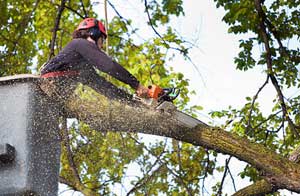 Tree Surgery London
Tree Surgery LondonTo obtain local information regarding London, Greater London check here
More Greater London Tree Surgeons: Greater London tree surgeons: Greenwich, Enfield, Barnet, Harrow, Richmond upon Thames, Hounslow, Bexley, Croydon, Ealing, London, Bromley and Kingston upon Thames.
Tree Surgery SW1 area, 020.
More Trades: Gate Fitters - Gutter Cleaning - Tilers - Carpet Fitters - Carpenters
Tree Management London - Vegetation Management London - Tree Surgery London - Crown Thinning London - Tree Surgeon London - Tree Care London - Tree Pruning London - Tree Surgeons London - Tree Felling London




